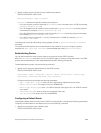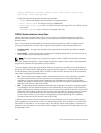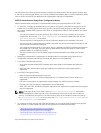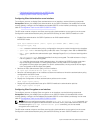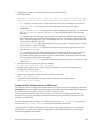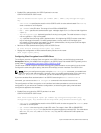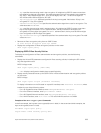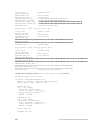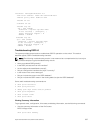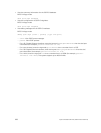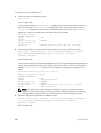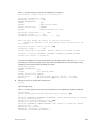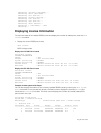
Interface: TenGigabitEthernet 0/1
Link Local address: fe80::201:e8ff:fe40:4d11
IPSecv6 policy name: OSPFv3-1-600
inbound ah sas
outbound ah sas
inbound esp sas
spi : 600 (0x258)
transform : esp-des esp-sha1-hmac
in use settings : {Transport, }
replay detection support : N
STATUS : ACTIVE
outbound esp sas
spi : 600 (0x258)
transform : esp-des esp-sha1-hmac
in use settings : {Transport, }
replay detection support : N
STATUS : ACTIVE
Troubleshooting OSPFv3
The system provides several tools to troubleshoot OSPFv3 operation on the switch. This section
describes typical, OSPFv3 troubleshooting scenarios.
NOTE: The following troubleshooting section is not meant to be a comprehensive list, but only to
provide examples of typical troubleshooting checks.
• Have you enabled OSPF globally?
• Is the OSPF process active on the interface?
• Are the adjacencies established correctly?
• Did you configure the interfaces for Layer 3 correctly?
• Is the router in the correct area type?
• Did you include the routes in the OSPF database?
• Did you include the OSPF routes in the routing table (not just the OSPF database)?
Some useful troubleshooting commands are:
• show ipv6 interfaces
• show ipv6 protocols
• debug ipv6 ospf events and/or packets
• show ipv6 neighbors
• show virtual links
• show ipv6 routes
Viewing Summary Information
To get general route, configuration, links status, and debug information, use the following commands.
• View the summary information of the IPv6 routes.
EXEC Privilege mode
show ipv6 route summary
Open Shortest Path First (OSPFv2 and OSPFv3)
657



